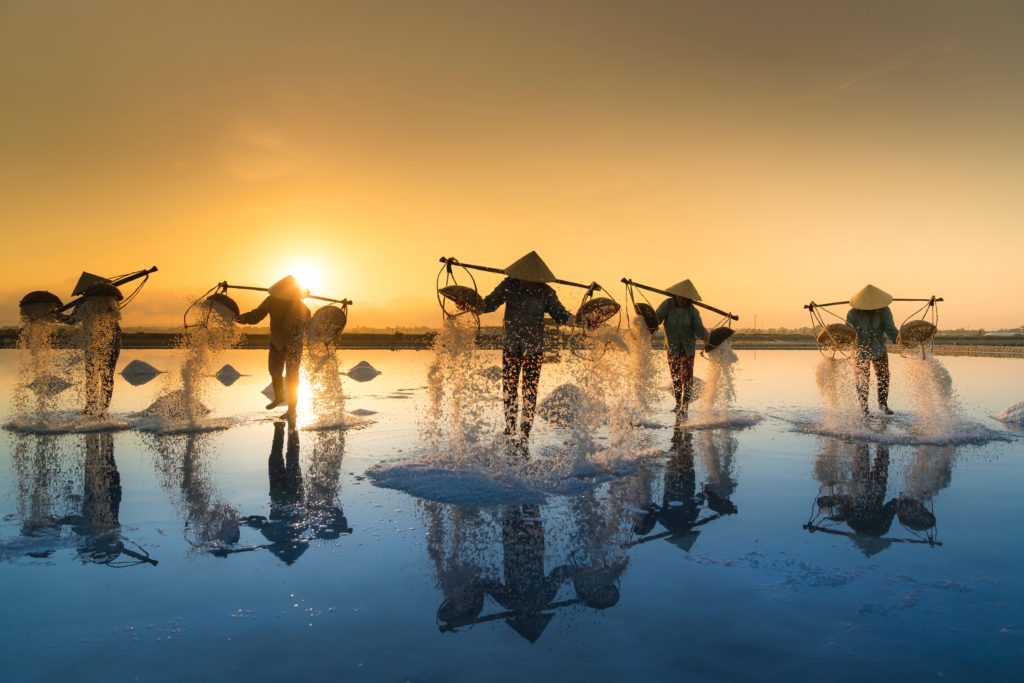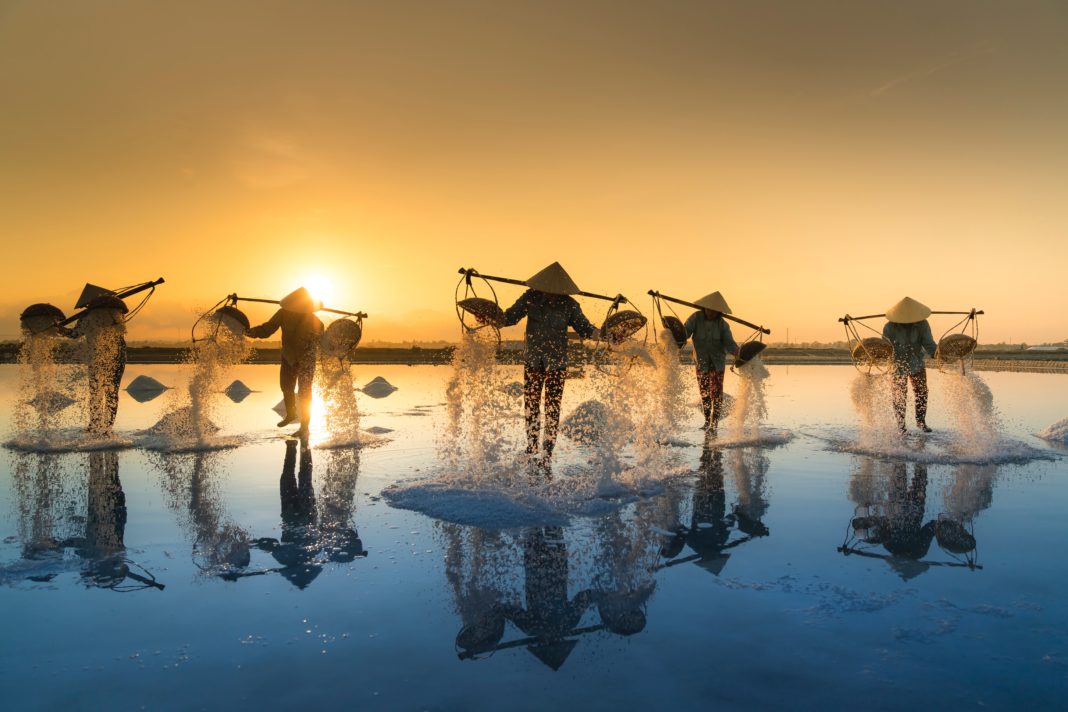For approximately 500 years, Madura Island is known as a traditional salt-producing region in Southeast Asia. There are more than 15,000 hectares of fields that produce salt with the help of sunlight. That panic of Madura Island is also called Salt Island. This name is not excessive considering traditional salt production on Madura Island is the largest in Southeast Asia.
This vast area is spread in several places such as the southern coast of Sampang Regency, Pamekasan and Sumenep. This salt field is divided into 4,572 plots. From each plot can produce at least 10 tons of salt for one period, with the production period to harvest since the water flowed is 28-30 days.
 The traditional process of making salt is very easy and simple. Sea water is flowed into the prepared place, then deposited and cleaned of mud, flowed into the prepared plots. the sea water will dry out and only salt is still mixed with a little water after approximately 28-30 days. After completely crystallizing in that time span, the salt is ready to be harvested.
The traditional process of making salt is very easy and simple. Sea water is flowed into the prepared place, then deposited and cleaned of mud, flowed into the prepared plots. the sea water will dry out and only salt is still mixed with a little water after approximately 28-30 days. After completely crystallizing in that time span, the salt is ready to be harvested.
Usually the production process is carried out in April during the dry season. The salt granules that have just been taken from the pond are not completely dry yet. Therefore, the salt that has been harvested is still dried in the sun and aerated through a gust of coastal wind for about 4-10 days. The process of making and drying this salt 100% uses the help of sunlight and wind as the main energy. Solar light functions to evaporate seawater so that only the salt crystals remain, while the wind with the help of windmills is used to pump water into the pond location.
According to travellingto.asia














